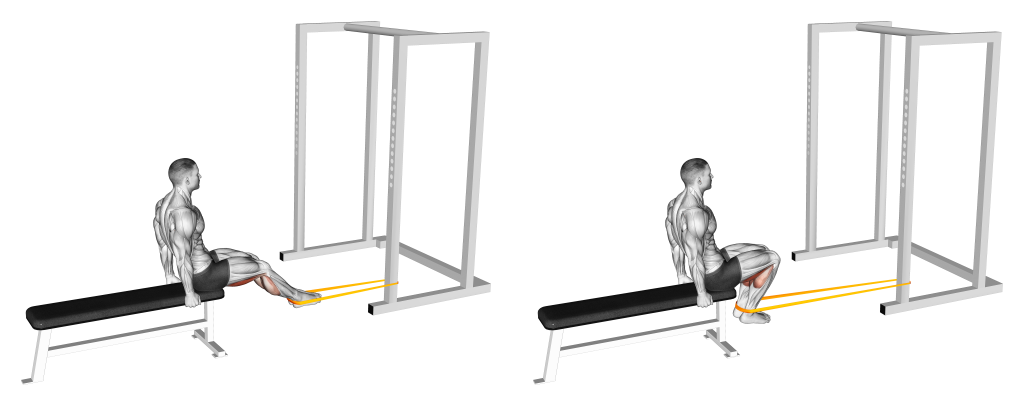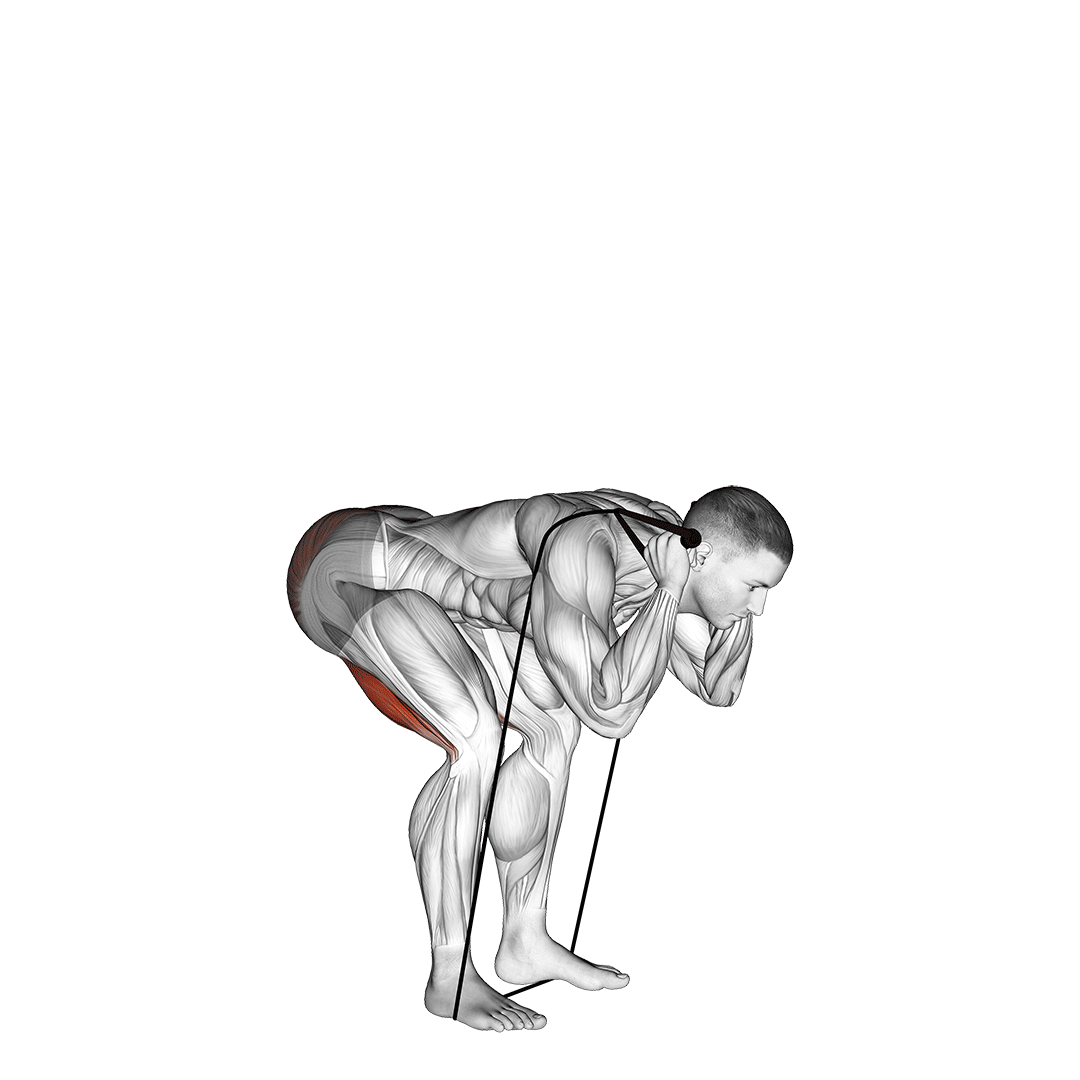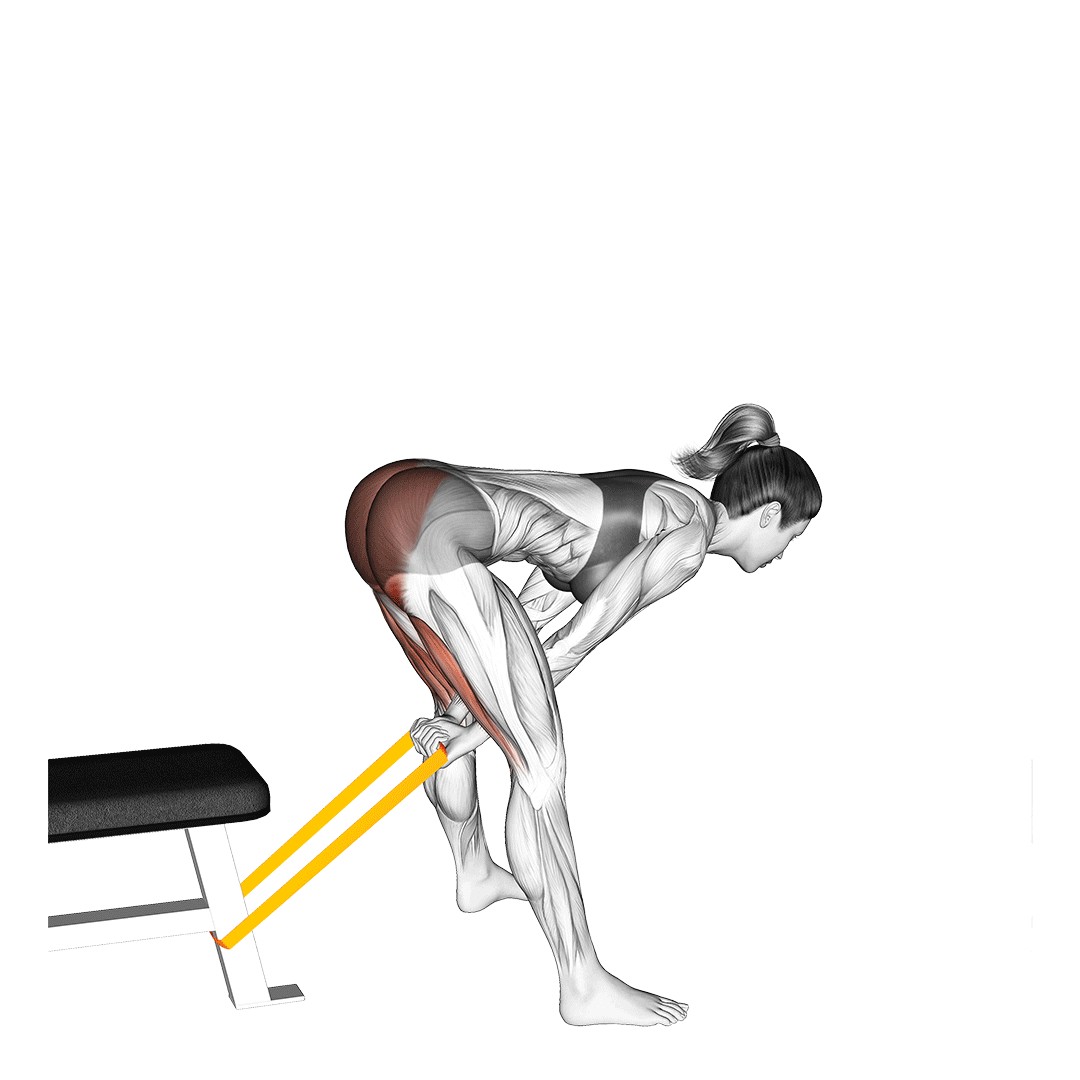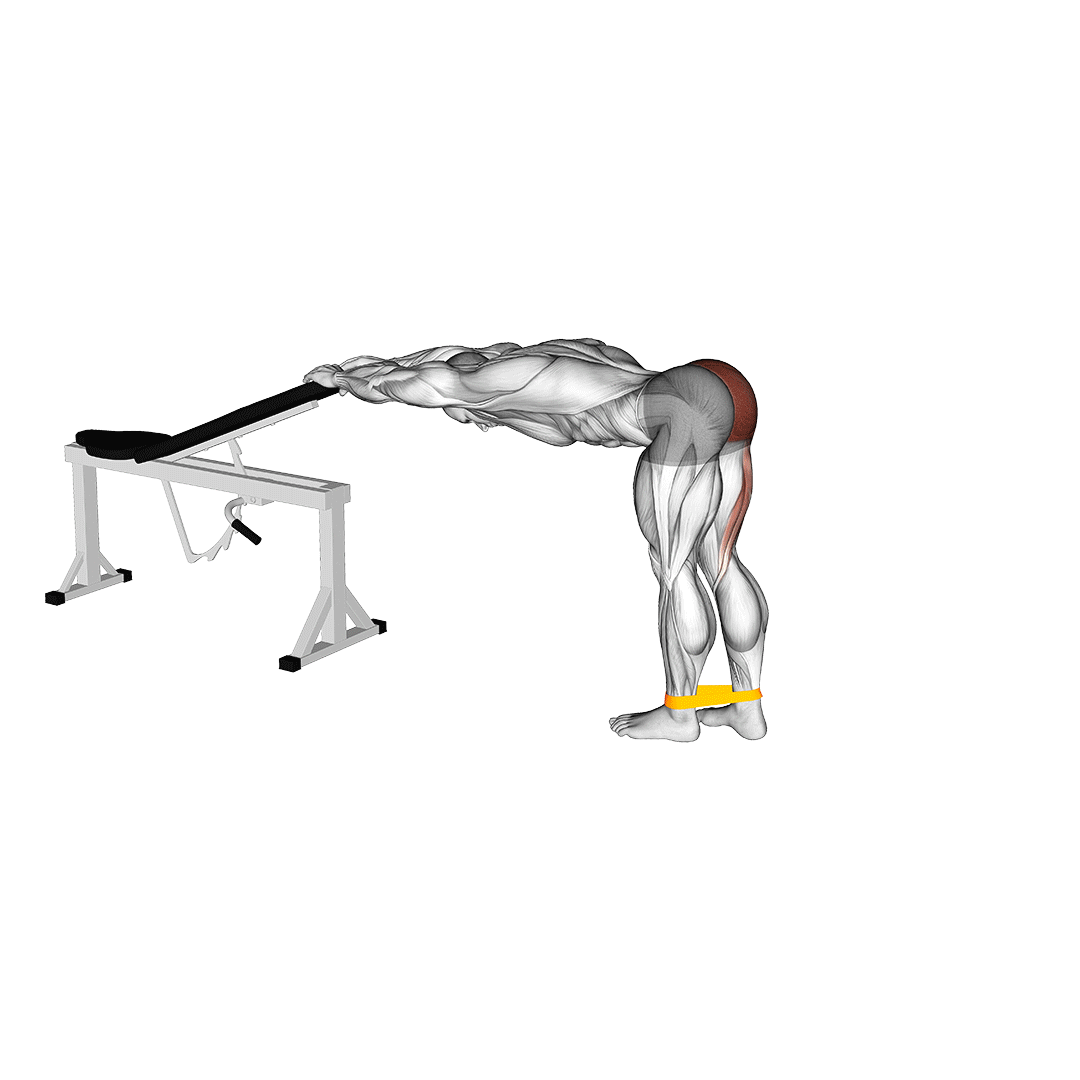7 Best Resistance Band Hamstring Exercises (with Pictures!)
1. Lying Hamstring Curls
A banded hamstring curl is a leg curl performed with a resistance band. This is especially beneficial when there isn't an accessible lying leg curl machine. Resistance is given by an external force and is altered by switching out the bands to a lesser or heavier resistance.

To perform a lying hamstring curl, the resistance band is attached to a stable item or surface, while the other end is hooked on one heel while the participant is lying prone (on their stomach).
The knee is bent to move the heel closer to the buttocks while the front of the thighs and hips remain on the ground.
When the knee reaches the end of its range and cannot be bent any further, it is carefully extended to return to the starting position.
Repeat the movement for the desired number of reps to complete a set.
2. Seated Hamstring Curls
The sitting hamstring curl also known as the seated leg curl is a hamstring muscle isolation exercise. It is usually performed using a hamstring curl machine, although, it may also be performed with the use of resistance bands in situations where a machine is inaccessible.

Isolation exercises such as this target muscles individually in a way that compound exercises cannot, and is quite effective in strengthening the hamstrings.
When doing a seated, banded hamstring curl, a resistance band is securely fastened to a strong and solid piece of furniture or a permanent post.
The person is seated in a chair in front of the item to which the resistance band is linked and loops the band around one heel while keeping the legs together.
The knee is bent against resistance until it can no longer be flexed. When the knee flexion reaches the end of its range, it is gradually straightened to return to the beginning position.
3. Banded Good Mornings
The banded good morning is an excellent exercise that works the hamstring muscle and various other muscles such as the glutes, erector spinae, and lower back muscles.
With this exercise, an individual will be able to increase the strength of the leg and back muscles.

To perform this exercise, take a band and step on the end with both feet at hip-width apart then wrap the other end at the back of the neck.
Then, stand straight up making sure that the core is kept tight the whole time. Hinge at the hips as low as possible, and a stretch at the hamstring muscles must be felt.
Stand up straight again to finish a single rep.
Take note that the back must not arch all throughout the process of the movement, especially when bending the torso forward, and to not overextend the back.
Repeat this motion for the desired number of reps to complete a single set.
4. Banded Pull-throughs
The banded pull-through is an exercise that works the muscles in the glutes and hamstrings of an individual.
This is an excellent compound, especially when building up muscles to be able to master the king of compound exercises which is the deadlift.

To perform this exercise, take a resistance band and hang it at about knee level from an upright position on a stable pipe.
Stand in front of the band wherein the back is facing the band. The feet are slightly wider than shoulder-width apart, engage the core and the back should be in a neutral position at all times.
Grab the band between the legs with an overhand grip, then walk forward until max tension is created from the bands. This is the starting position.
To start the exercise drive the hips back to bend the torso forward and then squeeze the buttocks to extend the hips and return to an upright position.
Repeat this motion for the desired number of reps to complete a single set.
5. Single Leg Banded Hip Thrusts
The single-leg banded hip thrust is a variation of hip thrusts that makes use of resistance bands instead of free weights. This workout primarily targets the glutes but also includes engaging the spinal erectors, hamstrings, quads, and adductors.
To perform this exercise, go into starting position by placing the upper back against a bench. One knee is bent at approximately a 90-degree angle and the foot of that same leg is flat on the floor as this will be the working leg.
The other leg is placed bent at the knee and hip at a 90-degree angle as it floats.
The arms will be placed flat on the bend, then bend the elbows and hold the head to act as its support. The movement should be left on the upper back and the hips and not the elbows. Place a band around the legs, just behind the knees, while in the starting position.
Squeeze the buttocks and contract the core for stability. Then lift the hips until it is aligned with the torso or parallel to the floor, briefly hold this position before lowering the body down again, returning to the starting position.
Repeat this motion for the desired number of reps to complete a single set.
6. Donkey Kickbacks
The banded donkey kickback is a compound exercise that works the muscles gluteus maximus, hamstrings, core, shoulders, and back.
This exercise is good for increasing stability as well as improving muscle tone. With correct form, this is a highly efficient exercise that will incorporate various benefits.

To perform this exercise, stabilize yourself by grabbing a bench or chair or similar stable object in front of you; The back must not be arched and is in a neutral position.
One end of the resistance band is wrapped beneath one foot and the hand of the same side holds the other end of the resistance band.
Kick the foot back by extending the hips and fully extending the knees to fully engage the hamstrings and glute muscles.
The movement should be slowly executed moving at about 2 seconds before reaching full extension. Briefly hold the position for about 2 seconds before returning the leg to its prior position.
Repeat this motion for the desired number of reps and then switch to the other leg with the same number of reps to complete a single set.
7. Resistance Band Romanian Deadlifts
The Romanian deadlift is used to improve hip health, joint motion, muscle growth, and muscular endurance. This exercise specifically targets the glutes, hamstrings, shoulders, upper back, forearms, and core muscles.
The exercise benefits the improvement of activities of daily living (ADLs) such as lifting heavy objects, walking, reaching items from the ground, and other activities in order to make them easier to perform.
The Romanian deadlift also helps to balance the strength of the hamstrings and quadriceps.
To perform this exercise, stand with the feet shoulder-width apart, stepping on the center of the band with both feet.
Then hold each end of the band with the palm of the hands facing the body; Hinge at the hips to push the glutes back.
After getting into position, pull on the band by pushing the hips forward to move to an erect position, making sure that the knees are as straight as possible and the chest high.
Hold this position briefly then slowly return to the starting position by hinging at the hips again in a controlled motion.
Repeat this motion for the desired number of reps to complete a single set.
References
1. Agre, James C. "Hamstring injuries." Sports medicine 2.1 (1985): 21-33.
2. Worrell, Teddy W., Troy L. Smith, and Jason Winegardner. "Effect of hamstring stretching on hamstring muscle performance." Journal of Orthopaedic & Sports Physical Therapy 20.3 (1994): 154-159.
3. O'Sullivan, Kieran, Elaine Murray, and David Sainsbury. "The effect of warm-up, static stretching and dynamic stretching on hamstring flexibility in previously injured subjects." BMC musculoskeletal disorders 10.1 (2009): 1-9.
